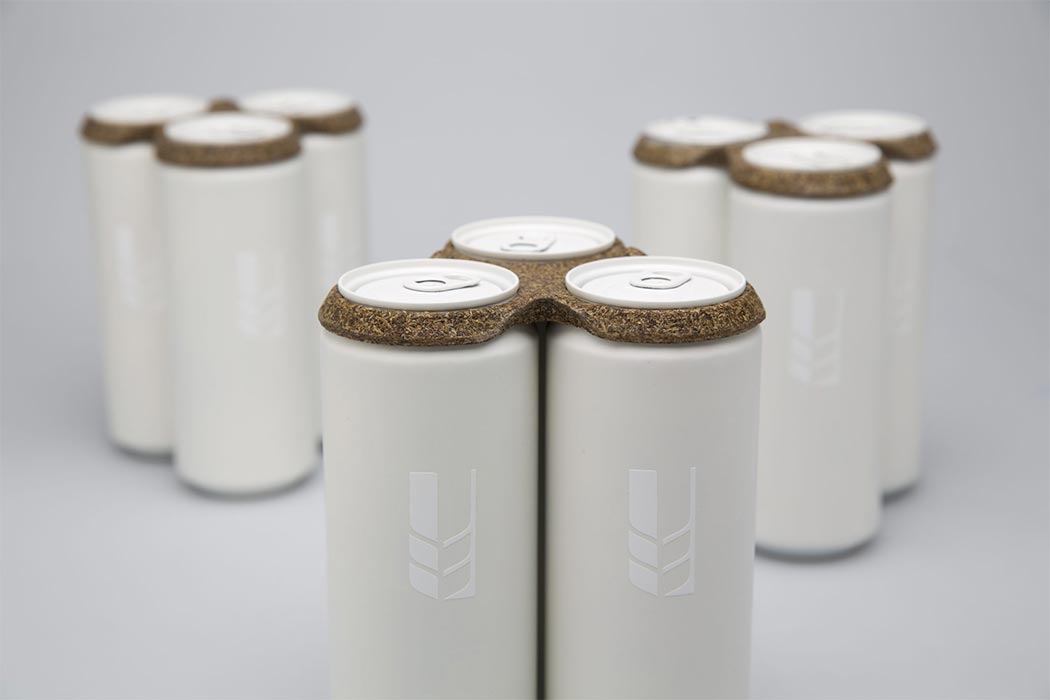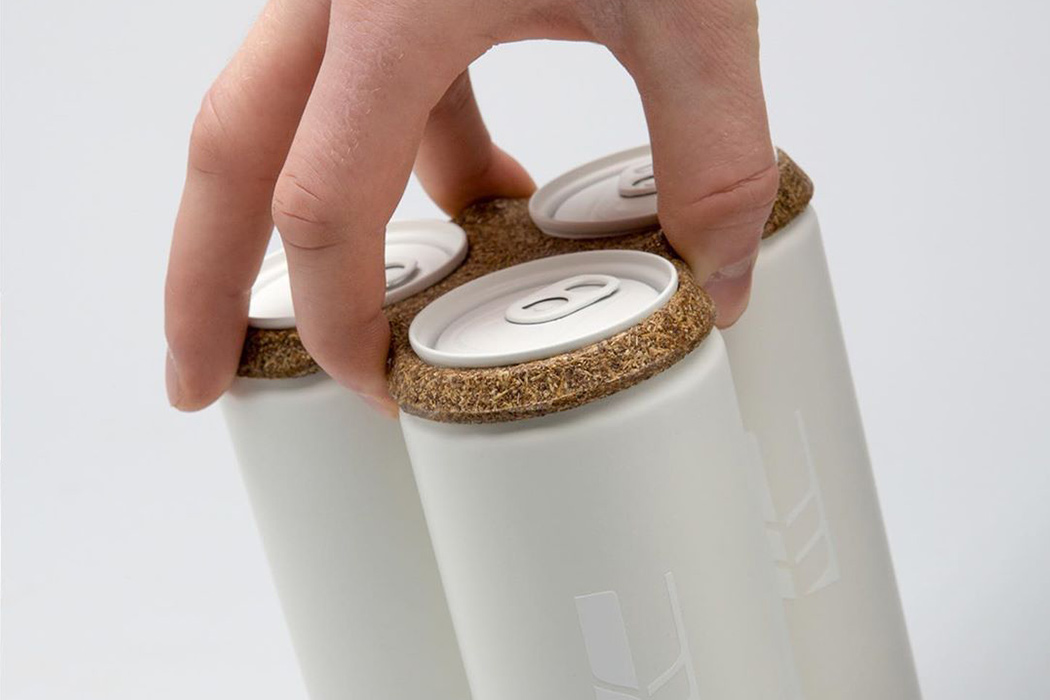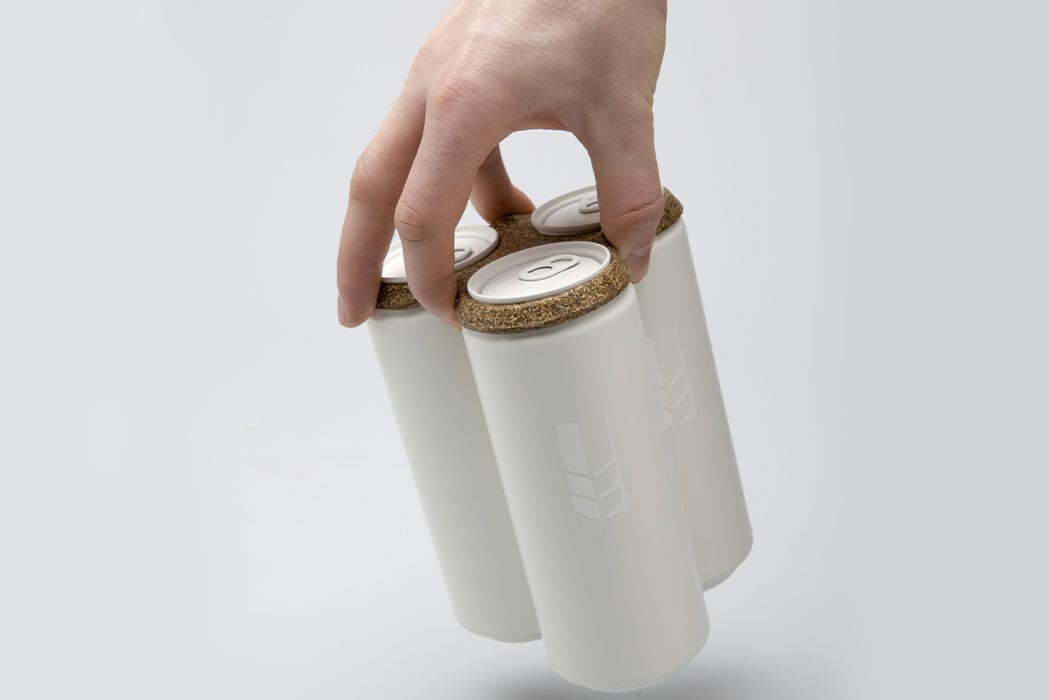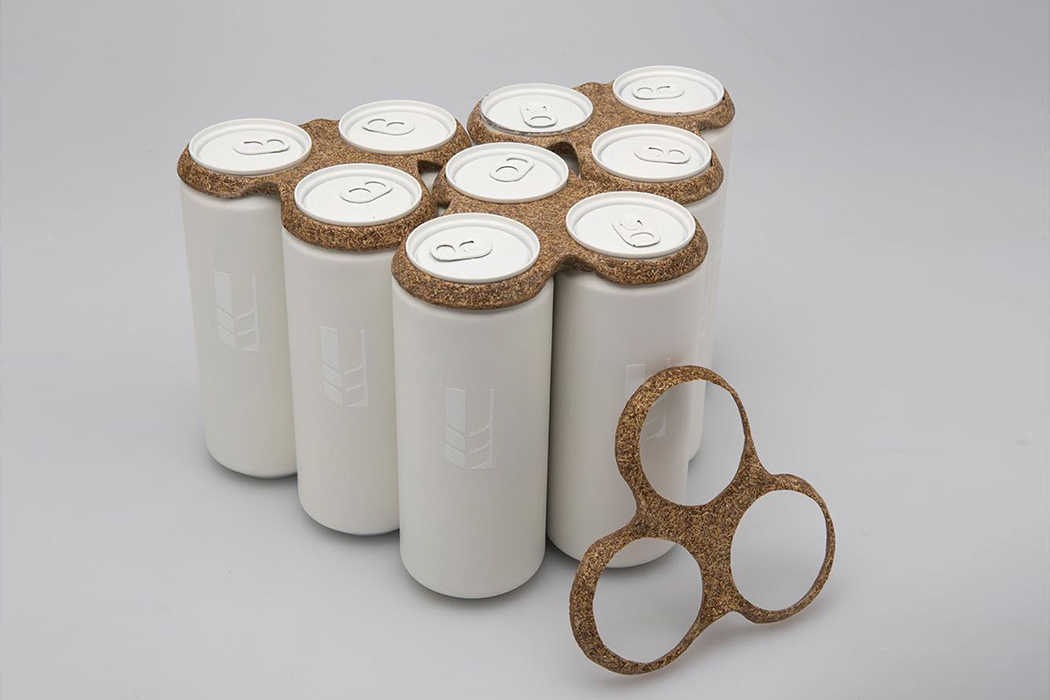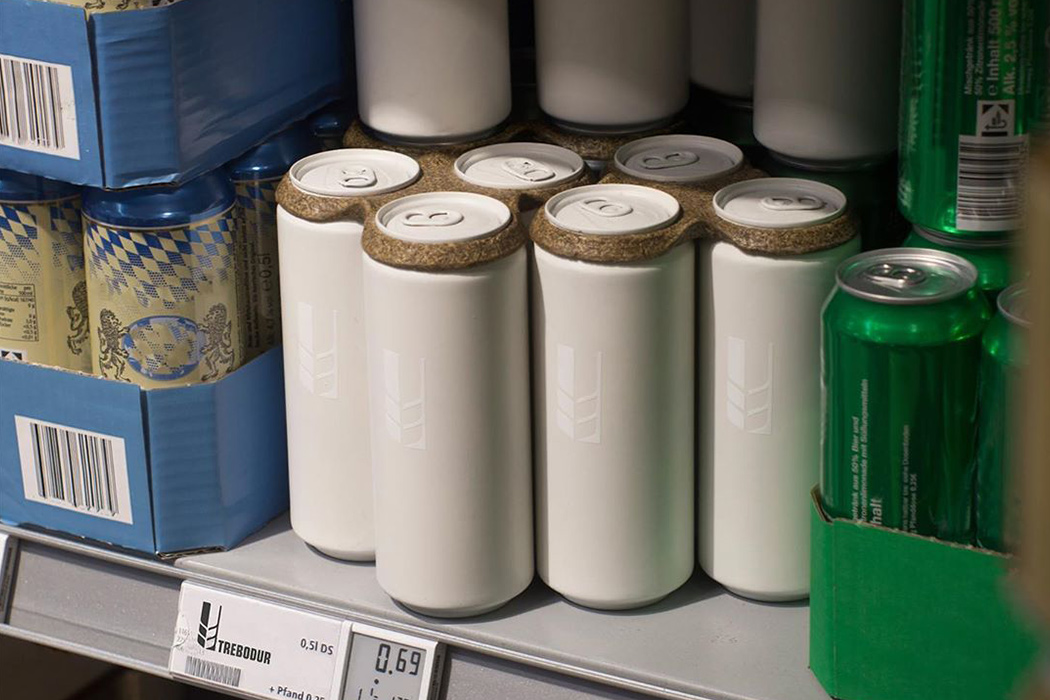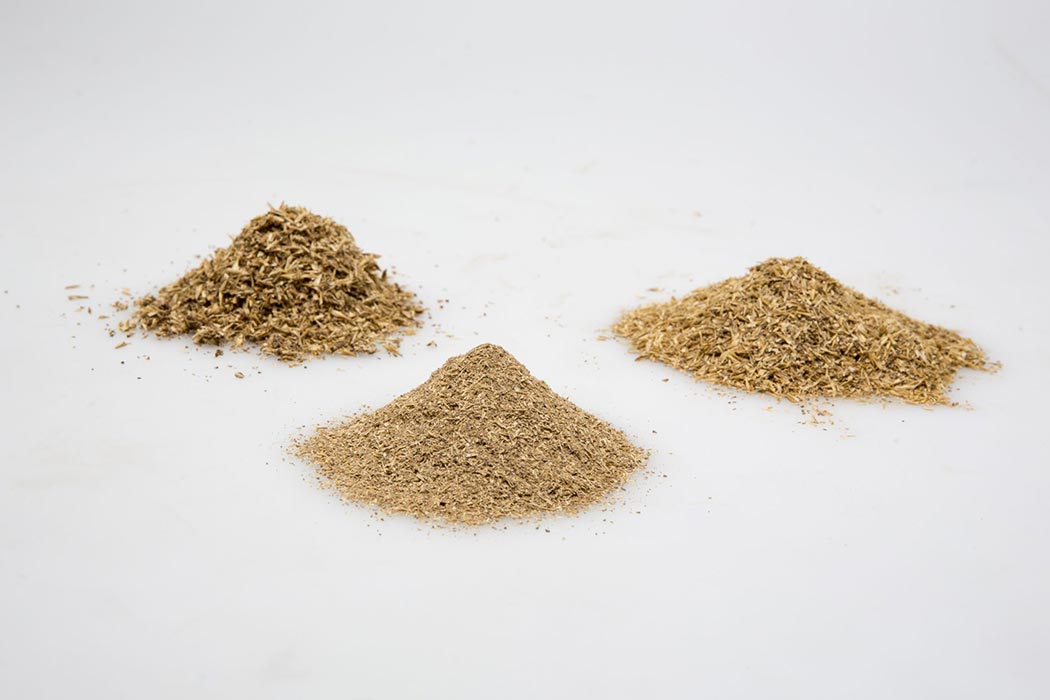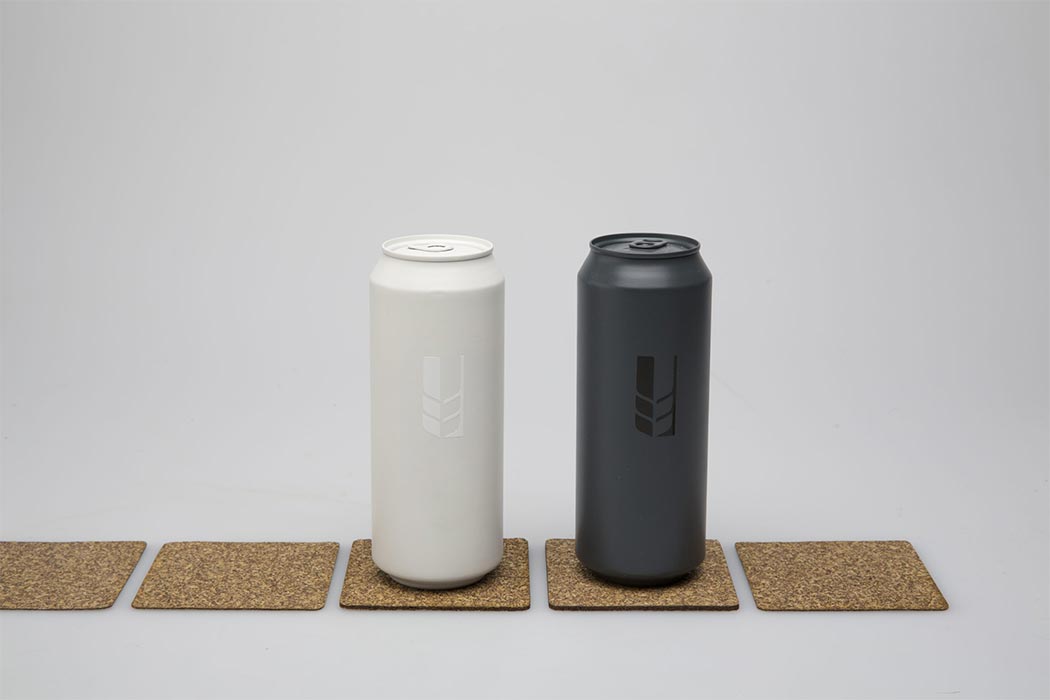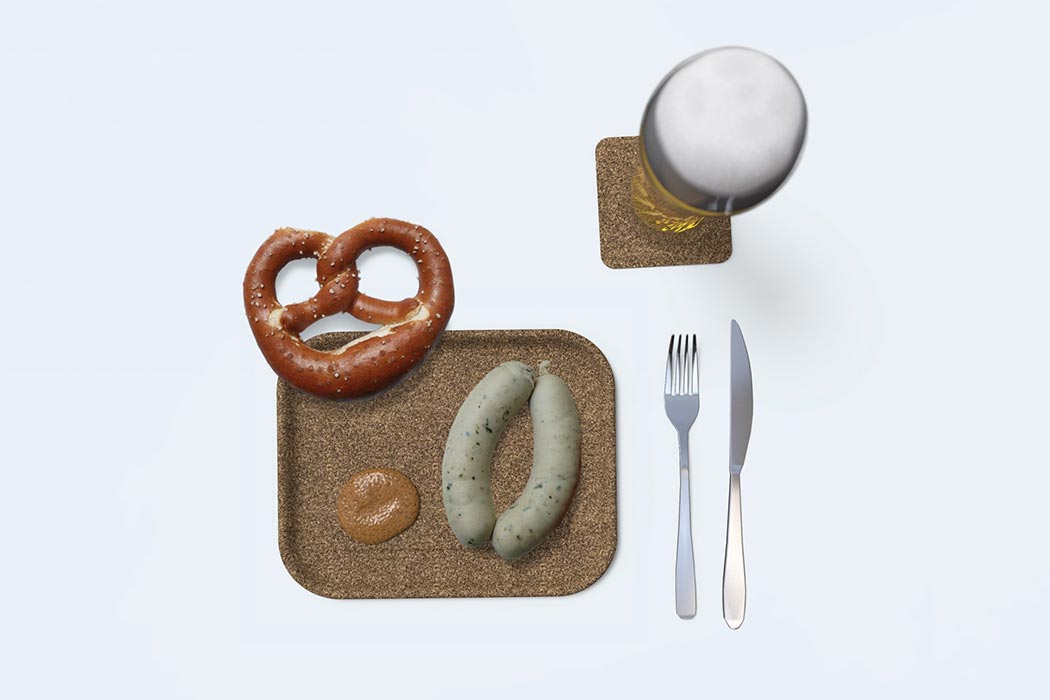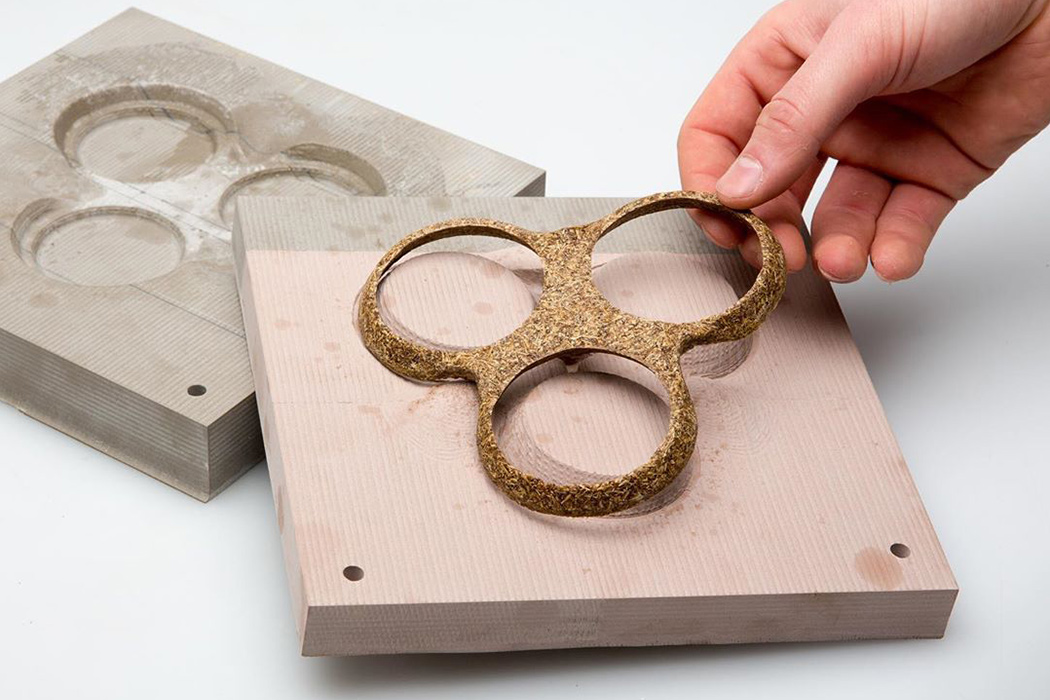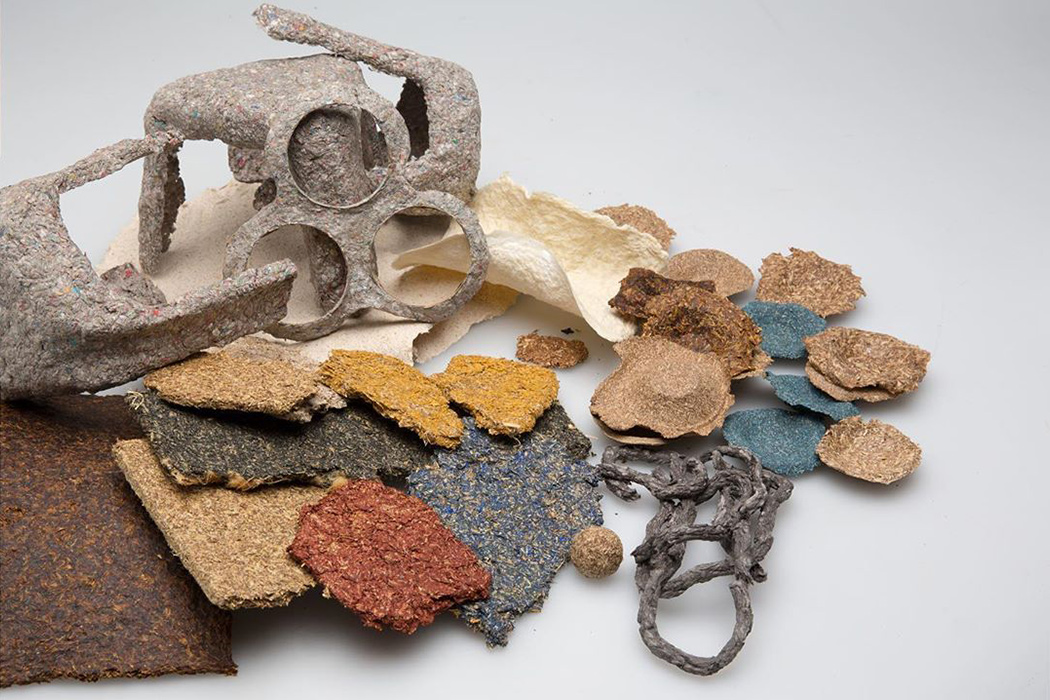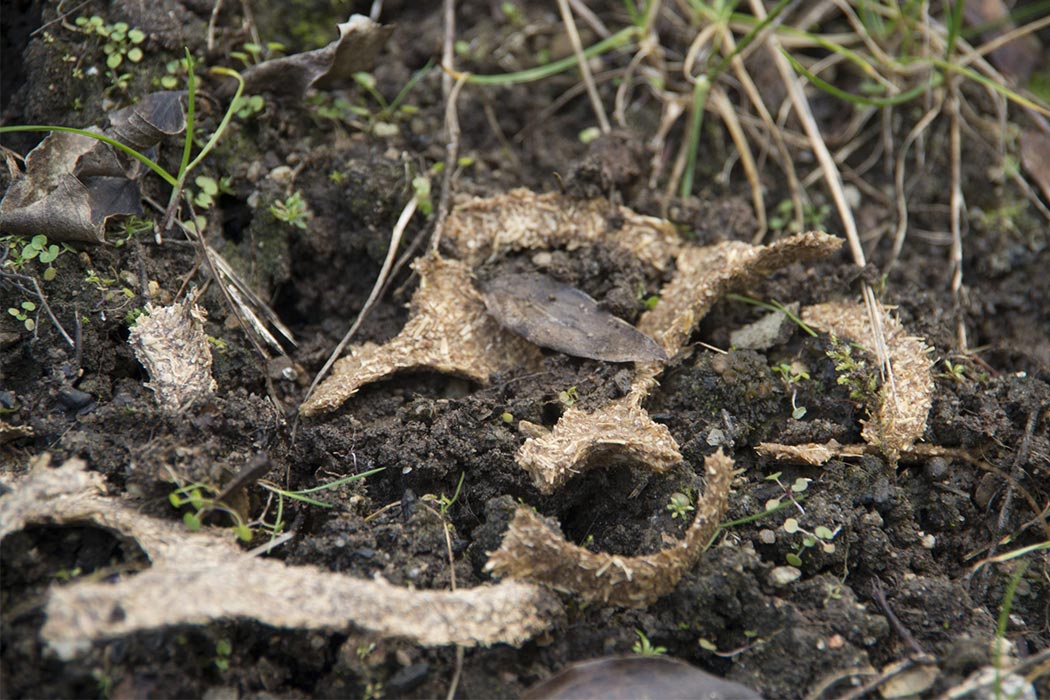
I am still learning about sustainable materials and how that ties in with creating a circular economy. A circular economy is a system of closed loops in which raw materials, components, and products lose as little of their value as possible while renewable energy sources are used and the product’s lifecycle ends naturally. One such innovative material is ‘Trebodur’ – an organic material made entirely from brewers’ spent grain!
Brewers’ spent grains are the residues that accumulate from barley malt during the process of lautering while making beer. So what binds the material to give it strength? The contained proteins in the spent grains act as a natural binder, now that’s a self-sufficient material! Creators Niko and Tillmann did extensive research and several experiments with natural fibers and binders. At the end of that process, they found the capabilities of brewers’ spent grain and used the self-binding fiber material to develop the ‘mabeerial’ which doesn’t need any additional binders. “In the future, we will increasingly need to substitute petrochemical materials. 100% natural? You won’t make it!” but the creators of Trebodur made it happen by developing an entirely natural material.
Being a 100% biodegradable, Trebodur is a perfect choice for creating products that are used and thrown at large events or even in PR packages. It can be used for all kinds of packaging products and become a substitute material for paper and plastic packaging. At the end of the lifecycle, products made from Trebodur can be easily composted without any residue or harmful waste. This has immense potential to reduce single-use waste. “Due to its utterly natural origin, the material decays quickly, even on garden compost heaps. Furthermore, it is possible to add substances like minerals, ashes, or even plant seeds to the material to supply the soil,” says the team. They give drinking responsibly a whole new meaning!
Designers: Niko Stoll and Tillmann Schrempf
